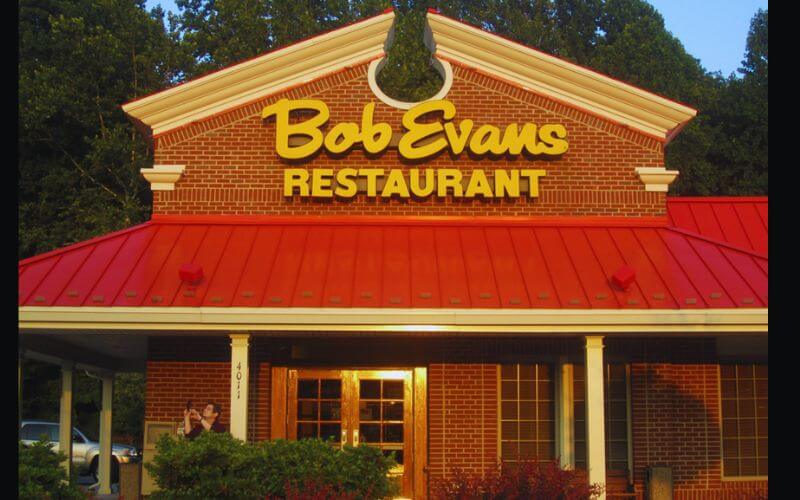Over the past several years, Bob Evans Restaurants has found itself at a crossroads shrinking in size, yet continuing operations in hundreds of locations. Restaurant closures, shifts in ownership, and financial challenges have sparked rumors about a complete shutdown. If you manage a business or lead a team, you know speculation is often louder than reality. Let’s walk through the numbers, review the trends, and see what you can actually expect from Bob Evans as both a brand and a business.
Key takeaway: Bob Evans is not going out of business, but it is a smaller, leaner company focused on surviving and adapting. Understanding why helps you spot patterns in your own market too.
History of Restaurant Closures
Like many well-known family dining brands, Bob Evans has trimmed its presence in response to changing customer habits and industry headwinds. In recent years, the company has repeatedly shuttered underperforming locations to reduce losses and concentrate on higher-performing sites.
For example, in one notable weekend, the chain closed 21 restaurants at once. Not long after, it announced another six closures. If you lead a storefront business, this type of action is a last resort after exploring all other cost controls think reviewing leases, negotiating with landlords, and adapting menus. Frequent closures signal deeper struggles but also reflect leadership’s willingness to take tough decisions quickly.
Review regularly: Ask yourself which locations or segments add real value and which tie up resources.
Since 2020, Bob Evans has continued to close about 20 restaurants per year. These aren’t small decisions. Each closure means layoffs, supply chain adjustments, and a need to reassure the rest of the team. Tip: Before you cut locations, always double-check for turnaround potential using customer feedback and local partnerships.
Changes in Ownership
Ownership changes often bring both new energy and new uncertainty. Bob Evans’ history is a textbook example for any business owner who’s thought about selling, divesting, or splitting up.
Back in 2017, after grappling with mounting financial problems, Bob Evans Farms sold its restaurant business to Golden Gate Capital, a private equity firm. This marked a turning point. The packaged food side which sells eggs, sausage, and mashed potatoes in grocery stores split off from the restaurants and was later sold to Post Holdings. Key takeaway: When your business has distinct units, sometimes separating them makes each one leaner and faster. But be aware splitting brands often brings a new set of challenges around focus, leadership, and customer trust.
Golden Gate Capital’s control brought new strategies, but not all resulted in growth. The company faced rising costs, a tough labor market, and more competition from fast-casual rivals. If you’ve navigated private equity ownership, you know there’s pressure to cut costs, refocus, and report progress fast.
Rumors in early 2024 again suggested a potential sale another example of how constant change becomes the norm in tight sectors. Did you know? Often, sale rumors can nudge teams into needed action, prompting process reviews and sharper performance metrics.
Current Operational Status
Despite these obstacles, Bob Evans maintains a noticeable footprint. As of April 2024, there are about 436 corporate-owned restaurants operating across 18 states. This is far short of its peak over 500 restaurants at its height but still enough to serve millions of customers every year.
For leaders, shrinking store counts often force questions about how to deliver consistent quality with fewer locations. Focus on the customers you already have before chasing new ones. Localize your menu if it boosts traffic, keep training sharp, and make every visit count.
Bob Evans’ core markets remain in the Midwest, Mid-Atlantic, and parts of the South. Concentrating stores in regions where the brand is well-known helps protect market share. For your business, this is a reminder: protect your core before expanding elsewhere.
Key takeaway: Size isn’t everything. Surviving means adapting, and sometimes that means fewer, stronger locations.
Financial Performance
Let’s talk numbers. While the company has shrunk, the financial picture hasn’t been completely bleak. After years of heavy losses, Bob Evans saw a modest uptick in systemwide sales in 2022. On average, the remaining restaurants performed slightly better, with per-location sales rising.
This calls out a useful test for any operator: Better to have 400 healthy restaurants than 500 with 100 dragging everyone down. Improving operational efficiency and maximizing revenue per location should always take priority over chasing raw unit count.
Another way to keep financials on track is to invest in digital ordering, targeted promotions, and streamlined menus. Use real-time sales insights to flag slow periods and create limited-time offers. Many chains, including Bob Evans, have experimented with breakfast-all-day, takeout packs, or smaller menus to drive higher margins.
For perspective, Bob Evans’ financial health now mirrors the wider family-dining space. Cost pressures wages, food, rent keep biting. But a loyal customer base and moderate same-store sales growth suggest there’s still value to be captured in comfort food, especially with the right local execution.
Future Outlook for Bob Evans
So where does Bob Evans go from here? The company is not closing its doors entirely, but future uncertainty remains. The real story is one of ongoing restructuring continuous efforts to right-size the portfolio, modernize service, and boost profitability.
Sale rumors have persisted through early 2024. Industries in transition often attract investors looking for bargains or operational turnarounds. For operators, this means more scrutiny from owners but also the potential for new capital or management approaches. Key takeaway: Expect change, and prepare your people. Communicate what you know (and don’t know) directly and calmly.
The family dining sector faces steady headwinds from quick service, ghost kitchens, and even meal kit competitors. As you scale, aim to balance tradition with smart upgrades. For example, invest in online ordering, loyalty apps, or community-driven events. The brands that adapt retain regulars while attracting new faces.
At Bob Evans, every new menu item, store redesign, or management change feeds into a long-term survival strategy. Don’t try to copy every trend at once. Test, review, and adjust. Focus on predictable cash flow, not flash-in-the-pan ideas.
Did you know? Fewer locations can actually mean greater operational control, higher quality, and more repeat business from loyal guests if you double down on service.
If you want to look up trends in other similar businesses, check industry-specific resources or guides like Mega Business Journal for reliable updates and operational tips.
Conclusion
Bob Evans isn’t out of business. Instead, the chain is smaller, leaner, and fighting hard to stay relevant. For leaders, the lesson is to cut what’s not working, protect your strongest assets, and adapt calmly to change. Each restaurant that closes is a tough call, but sometimes focusing on fewer locations protects what really matters long-term brand reputation and loyal customers.
Review regularly: keep close tabs on true profit drivers, not just headline sales. Invest in team culture and processes before pouring resources into one-off campaigns. When the news cycle stirs up rumors, focus on what you can control: customer experience, product quality, and day-to-day operations.
If you’re at the helm of a chain, remember: it’s not about being the biggest. It’s about serving your guests so well that they come back and bring others. Bob Evans is proving this lesson the hard way, but it’s a blueprint that works across businesses of all kinds.
Key takeaway: Shrinking isn’t always failing sometimes, it’s surviving smarter. Focus on stability, trust your team, and meet your customer where they are today. That’s how you set up for a better tomorrow, whatever the industry headlines say.


